#long-finned pilot whales
Note
Hi, This is sooo so very cool, I’m in the middle of my final exams right now and every so often I forget why I love biology, and chemistry and then I think dammit I should have just picked languages as my high level courses. But whenever I see your blog, I am reminded of why I want to study biochemistry. It’s just so insanely cool. Anyways, you don’t have to answer, but I just wanted to let you know. Many thanks!!!!
String identified:
, T c, ’ t a a gt a t gt g, a ct a t t at a t c agag a g c. t g, a at t t ct. t’ t a c. Aa, ’t a t a, t t at t t . a ta!!!!
Closest match: Globicephala melas genome assembly, chromosome: 19
Common name: Long-finned pilot whale (dolphin)

#tumblr genetics#genetics#the-name-was-lost#asks#YOOO FIRST DOLPHIN!!!#dolphins#also it makes me so happy to hear that this blog gets you excited about science again#i've almost quit several times. shit sucks#but it makes me so happy to see real scientists and students find joy in this silly little blog#you gotta push through. for the aminals#for the long-finned pilot whale (which is actually a dolphin)
652 notes
·
View notes
Text

Southern long-finned pilot whale Globicephala melas edwardii
Observed by oscarkokako, CC BY-NC-ND
#Globicephala melas edwardii#southern long-finned pilot whale#Cetacea#Delphinidae#cetacean#dolphin#whale#Oceania#New Zealand#Pacific Ocean
23 notes
·
View notes
Text

Long-Finned Pilot Whale (South Emisphere Form)
Globicephala melas edwardii)
Family: Delphinidae
Genus: Globicephala
Status and Conservation: Least Concern
This is the final subspecies in this small family, and they closely resemble each other. Distinguishing them requires expertise. This form, for instance, exhibits more prominent white stripes on its sides and top compared to the other subspecies, though the presence of this pattern is not exclusive to it. This form resides in the Southern Ocean near the Antarctic Pole, as its name suggests.
__________________________
Please consider joining the club where you can find more detailed information about every post here, spreads of the book that is in the making, and have access to the collectible E-Stickers.
Just click here
#long finned pilot whale#pilot whales#dolphin#whale#illustration#drawing#scientific illustration#illo#wild animals#wildlife#sea mammals#sea monsters#artist on tumblr#animals#mammals#animal
37 notes
·
View notes
Text

Meet the long-finned pilot whale (Globicephala melas)! Reaching lengths of up to 25 feet (7.6 meters), it's the second largest member of the dolphin family; the orca is the largest. This nomadic cetacean is widely distributed, and can be seen throughout the oceans of the Southern Hemisphere. It wanders in search of food such as squid, fish, mollusks, and other sea critters. This species is highly social, with family units called pods consisting of up to 100 members. Pilot whales have even been observed participating in multi-pod gatherings with more than 1,000 individuals congregating at once!
Photo: titouan_roguet, CC BY-NC 4.0, iNaturalist
#science#nature#natural history#animals#mammal#whales#pilot whale#did you know#fact of the day#ocean life#dolphin#cetacean
383 notes
·
View notes
Text
"I wanted to write a poem about how the extreme heat of the ocean is breaking my heart, but the whales beat me to it. In late July, almost 100 long-finned pilot whales left the deep, usually cold waters where they live—so deep, so cold that scientists have barely been able to study them. Together they came to the coast of western Australia and huddled into a massive heart shape (if your heart were shaped like 100 black whales, like mine is). Then, collectively, they stranded themselves on the shore. As soon as they lost the support of the water, their chest walls crushed their internal organs. They literally broke their hearts. Choreographed under helicopter cameras.
I want to write a poem about how capitalism is a sinking ship and how the extreme wealth-hoarding and extractive polluting systems that benefit a few billionaires are destroying our planet and killing us all. But the orcas beat me to it. Off the Iberian coast of Europe, the orcas collaborated and taught each other how to sink the yachts of the superrich. They literally sank the boats. While Twitter cheered.
The sinking ship is no longer a metaphor. The broken heart is no longer a metaphor. Who needs a metaphor in times as hot and blunt as ours? Let’s make it plain."
-- Alexis Pauline Gumbs
238 notes
·
View notes
Text

Grzimek's Animal Life Encyclopedia, vol. 11, Mammals II. 1972. Illustrated by Peter Barrett.
Beaked whales;
1.) Baird's beaked whale (Berardius bairdii)
2.) Strap-toothed whale (Mesoplodon layardii)
3.) True's beaked whale (Mesoplodon mirus)
4.) Sowerby's beaked whale (Mesoplodon bidens)
5.) Northern bottlenose whale (Hyperoodon ampullatus)
White whales and narwhals;
6.) Beluga whale (Delphinapterus leucas)
7.) Narwhal (Monodon monoceros)
Long snouted dolphins;
8.) Rough-toothed dolphin (Steno bredanensis)
9.) Atlantic humpback dolphin (Sousa teuszii)
True dolphins;
10.) Indo-Pacific bottlenose dolphin (Tursiops aduncus)
11.) Common dolphin (Delphinus delphis)
12.) Striped dolphin (Stenella coeruleoalba)
13.) Atlantic white-sided dolphin (Lagenorhynchus acutus)
14.) Common bottlenose dolphin (Tursiops truncatus)
15.) Risso's dolphin (Grampus griseus)
16.) Northern right whale dolphin (Lissodelphis borealis)
Pilot and killer whales;
17.) Long-finned pilot whale (Globicephala melas)
18.) Pygmy killer whale (Feresa attenuata)
19.) Irrawaddy dolphin (Orcaella brevirostris)
20.) Orca (Orcinus orca)
21.) False killer whale (Pseudorca crassidens)
Commerson's dolphins;
22.) Commerson's dolphin (Cephalorhynchus commersonii)
Porpoises;
23.) Harbour porpoise (Phocoena phocoena)
24.) Spectacled porpoise (Phocoena dioptrica)
25.) Dall's porpoise (Phocoenoides dalli)
26.) Indo-Pacific finless porpoise (Neophocaena phocaenoides)
#cetaceans#beaked whales#baird's beaked whales#strap-toothed whales#true's beaked whales#sowerby's beaked whales#northern bottlenose whales#belugas#narwhals#dolphins#rough-toothed dolphins#atlantic humpback dolphins#indo-pacific bottlenose dolphins#common dolphins#striped dolphins#atlantic white-sided dolphins#common bottlenose dolphins#risso's dolphins#northern right whale dolphins#pilot whales#long-finned pilot whales#pygmy killer whales#irrawaddy dolphins#orcas#false killer whales#commerson's dolphins#porpoises#harbour porpoises#spectacled porpoises#dall's porpoises
267 notes
·
View notes
Text
More than 100 long-finned pilot whales stranded along the shores of Western Australia on Thursday have returned to the ocean, while 29 died on the beach, wildlife officials said.
Officials were working to remove the 29 whales that had died on the beach, Pia Courtis, a regional wildlife officer with the Parks and Wildlife Service for Western Australia, said on Thursday in a news conference posted by the agency on social media. The agency planned to take biological samples and measurements from the dead whales for research.
After marine officials and volunteers had helped the other whales back out to sea, boats were on the water and a spotter plane was monitoring the area to ensure they did not return to shore.
The four pods of 160 pilot whales were spread across about 1,640 feet of beach at the Toby Inlet, near the town of Dunsborough, in Western Australia on Thursday morning, local wildlife officials said, in a statement on social media.
Photos shared by the wildlife service on Facebook showed rows of whales lying on the shore as crowds gathered to see the mass stranding.
The rescued whales had moved farther offshore on Thursday and were last seen traveling north, the wildlife department said.
“So far, so good — they haven’t made it back to shore, but we will keep monitoring them,” Ms. Courtis said.
Officials said they did not know what had caused the stranding, which included mostly adult females and a few calves. In general, experts have theorized that the causes for such strandings may include pods of whales following a sick, or stuck, whale and getting stuck themselves; the confusion brought about by undersea noise caused by humans; or an attempt to avoid predators.
Several mass strandings have unfolded in Australia in recent years.
7 notes
·
View notes
Text
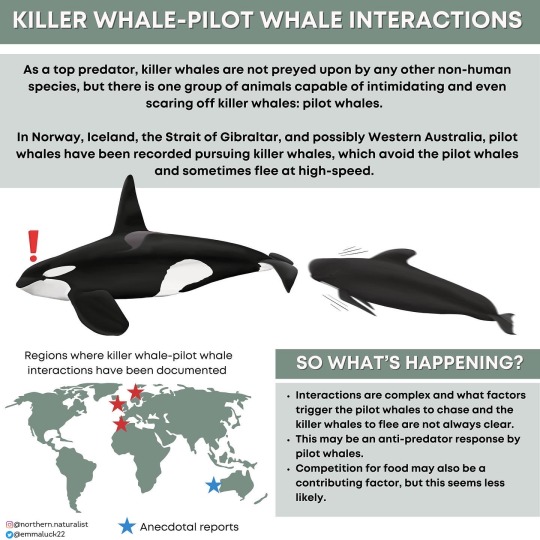
There’s not much that scares a killer whale. After all, it is a top predator capable of feeding on virtually any animal in the ocean. But there is one creature that can intimidate even killer whales—pilot whales.
In various parts of the world, long-finned pilot whales have been documented approaching and even chasing groups of killer whales. These interactions have occurred in Norway, Iceland, Spain, and there are anecdotal reports from Australia. Pilot whales may come charging into the area, harassing and pursuing a group of killer whales, which often respond by moving away and even fleeing at high speeds. I’ll never forget the day in Norway a few years ago when I was stuck at the house, unable to head out on the water for observations. On that particular day, a massive group of pilot whales appeared in the fjords, and the killer whales in the area all vanished for the rest of the day. The pilot whales had left by the following morning, and we managed to find a few killer whales that had returned, but it certainly gave me a lot to think about.
Curiously, pilot whales are attracted to killer whale calls, and upon hearing them, will respond by approaching the source of the sound, which may explain why they sometimes seemingly appear out of nowhere and start chasing the killer whales. Scientists suggest this behavior could be an anti-predator response to killer whales. Aggressively approaching the killer whales may be pilot whales’ way of saying “Hey, I can see you, get away from here!” There also may be some aspect of food competition, but this seems like a less likely reason as the diet of pilot whales and killer whales do not always overlap.
Another potentially important piece of this puzzle was revealed earlier this year when researchers in Iceland documented a tiny newborn pilot whale traveling with a pod a killer whales, with no other pilot whales in sight. Are killer whales calf-napping baby pilot whales?! There’s still much to be learned about these interactions.
References:
Curé C, Antunes R, Samarra F, Alves AC, Visser F, Kvadsheim PH, Miller PJO (2012) Pilot whales attracted to killer whale sounds: acoustically-mediated interspecific interactions in cetaceans. PLoS ONE 7:e52201.
Selbmann, A., Basran, C.J., Bertulli, C.G. et al. (2022) Occurrence of long-finned pilot whales (Globicephala melas) and killer whales (Orcinus orca) in Icelandic coastal waters and their interspecific interactions. acta ethol 25, 141–154
100 notes
·
View notes
Note
I understand if this is not…. The Content you want on your blog, but in your readings of logs and journals/diaries of whalers, do they talk about the sheer size of the whales? Especially in comparison to the boats used to hunt them? Maybe I just haven’t been reading closely enough, but there doesn’t seem to be much about the whales themselves in whaling logs. Which maybe speaks to how few and far between whales were successfully caught? But I also know that is faulty, because of how big the whaling industry was and how much devastation was wreaked on whale populations… LOTS OF THOUGHTS so I thought I would ask Tumblr’s resident expert.
Oh this is the exact content for my blog lol, call me Ishmael! Content warnings for animal death.
Because they're whalemen, when speaking about the size of whales they always referred to them in terms of 'barrels', meaning how much oil they imagined they'd yield. Many are the laments of losing a '100 barrel whale', which would be quite a massive animal indeed, and was very rare to see (though not unheard of). I think the largest whale I've seen a log capture was 120 barrels. This sample from the back of the logbook of the bark Osceola II, 1866, shows some of the typical sizes of the whales it caught:

[id in alt]
The average size of whales taken ranged from 30-60 barrels, from sperm and right whales. And the average length of a sperm whale is 35-50ft and 13-50 tons depending on if it's female or male, and for a right whale around 45-55 ft and 45-80 tons. So the rare 100 barrel whale seen here was likely a very large bull. They'd also take calves (😢), hence the smaller numbers too.
A whaleboat was about 25-30ft long, to get a sense of scale of boat vs whale. Whaling museums like installing whale skeletons alongside whaleboats to give that perspective. Here's the exhibit in Nantucket's museum:
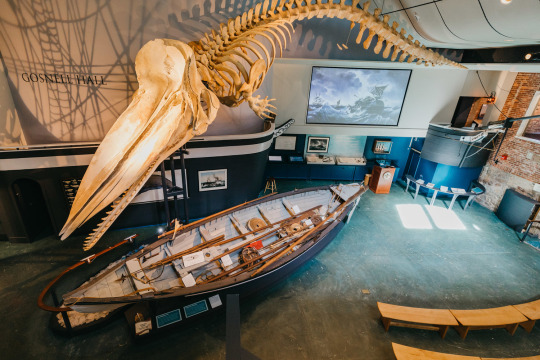
[id in alt]
And here's an example, in relation to a man, of a sperm whale's jaw:

[id in alt]
The jaw alone could be up to 25 ft long. I've stood in front of these jawbones myself and MAN it gives me the willies every time.
The drawings of whalemen also can give a sense of what it feels like to be alongside such an animal. 2nd mate Benjamin Boodry of the Arnolda, 1852, drew an image of his experience of almost having his ‘brains knocked out by a whale' the day before, named here as 'Head breaker'.

[id in alt]
He wrote-- "I do not think that whaling will agree with mine that is if they are a going to Bite as Close to me as they did yesterday this being knocked 15 feet right into the air and coming down alongside of his jaw by a whales rooting is not what it is cracked up to be."
In the 19th century, whalers tended to go after Right whales and Sperm whales and, in the latter half of that century, Bowhead whales. Right whales and bowheads were sought after because they tended to be slow moving and rather peaceable, (😢) and had a lot of blubber and baleen. Sperm whales were much more aggressive, but had much more valuable spermaceti in their head case. Those three also tended to float when killed, though that wasn't always the case. Whalers also lowered for 'blackfish' (pilot whales), but only for practice because there wasn't much oil to make the labor worth it.
Humpbacks weren't particularly popular to hunt because of their tendency to sink when killed and their baleen was too short to be of commercial value. 'Mussel diggers' or 'devil fish' (grey whales) were also not hunted often because they had a reputation of being very aggressive and also had a tendency to sink when killed. 'Sulphur bottoms' (blue whales) were avoided almost entirely, because they were Way Too Big and Way Too Fast and sank. And 'finbacks' (fin whales) as well, because they were too fast and sank. Many a logbook complained about seeing nothing but 'humpbacks, mussel diggers, sulphur bottoms, and finbacks' and often didn't bother them much. Whalers only lowered for these whales when things were particularly desperate, and they usually ended up regretting it. Here's Mr. Stetson from the bark Arab, 1855, talking about a situation when they fastened to a mystery whale that escaped. He shared his thoughts on what it may have been based on its behavior:
‘[…] he gave the whale chase, went on and got fast to him immediately without any difficulty, but as soon as the whale was struck off he started like an affrighted race horse, and although he did not sound, yet he went so fast that they could not hold on to the line at all and the whale accordingly took the whole tubfull nearly as fast as it could run out of the boat, the boat in the meantime going like a locomotive engine. The 2nd mate allowed the whale to take the line until it became very evident that he could not prevented from taking the whole of it if they held on, and accordingly just before the end was reached he cut the line saying he could save enough for a “short warp” about four fathoms.
Of all the traveling that I ever saw whales do, this I think was beaten only by the finback that we shot on Kodiak the day before leaving, and that fellow I think traveled at the extreme height of a whale’s speed. What manner of whale this was that the second mate struck was a subject of some controversy, as the transaction passed so quickly that no one hardly obtained a good sight of him: by some he was pronounced a sulphur bottom and by others a humpback, but the general opinion was that he was a sulphur bottom. Whatever species he belonged to he was certainly a racer of the first class.”
Either way, a whale is a huge animal regardless of species. It was an absolutely brutal endeavor--there was no way to kill an animal of that size quickly or cleanly. And the ones who killed it (which would often take hours) would then have to row those dozens of tons of deadweight back to the ship that was often miles off (which would also often take hours).
On a successful voyage, a ship might take 40 whales over the trip, but there were many voyages that didn't kill that many. Regardless, with hundreds of voyages every year, those numbers added up to the point that those whale populations are still in recovery today. But it can't all be attributed to 19th century whalers--there's 20th-21st century commercial whaling, boat strikes, fishing line, fracking, chemical and plastic and noise pollution, etc. that continue to harm those populations today. And there are also folks working to heal both old and continuing harm so...that's what's important.
108 notes
·
View notes
Photo
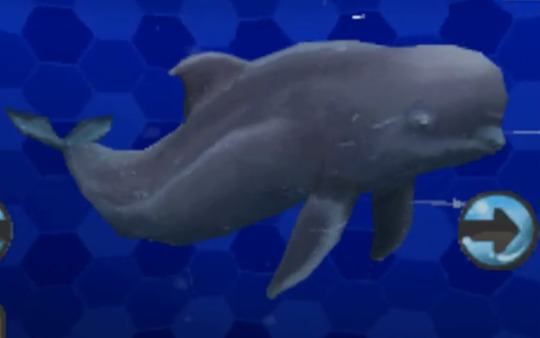
[ID: An image of a long-finned pilot whale from Petz Dolphinz Encounters. End ID.]
Long-finned pilot whale from Petz Dolphinz Encounters (2009)
16 notes
·
View notes
Photo
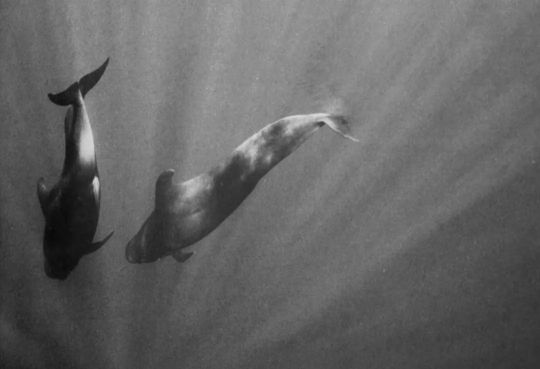
Short-finned pilot whales, 1988. "Like orcas, pilot whales spend their entire lives in the group into which they were born. Consequently, the members of a group are all closely related, and their society is stable and close-knit. ...Images of dolphins that we find attractive perhaps reflect our longing to share what appears to be a peaceful, untroubled world." From "Dolphins" by Chris Catton. https://www.instagram.com/p/CdbaoAEt1uT/?igshid=NGJjMDIxMWI=
180 notes
·
View notes
Photo

Northern long-finned pilot whale Globicephala melas melas
Observed by lospinguinos, CC BY-NC
#Globicephala melas melas#northern long-finned pilot whale#Cetacea#Delphinidae#cetacean#dolphin#Europe#Iceland#Atlantic Ocean
2 notes
·
View notes
Text

Long-finned Pilot Whale
Globicephala melas melas
Family: Delphinidae
Genus: Globicephala
Conservation Status: Least Concern
This whale is not a whale but a large dolphin. Despite the minimal differences between the Short-finned Pilot Whale and this species, they are indeed two distinct species. If that is not perplexing enough, this dolphin also possesses one subspecies—actually two, although one became extinct long ago along the coasts of Japan. In fact, scientists aren't sure that was a subspecies but almost sure. Let's say %93,2 sure.
You see, science is consistently regarded as an exact discipline.
Consider joining the club here.
No money? No problem. Follows, likes and shares will help too.
Hasta la vista.
#Long finned Pilot Whale#pilot whales#whales#dolphins#illustration#drawing#scientific illustration#illo#wild animals#wildlife#animals#artist on tumblr#mammals#whale#conservation#endangered species#extinction
34 notes
·
View notes
Text
creature of the week: these fuckers

orcinus orca, commonly referred to as orcas or killer whales, are found fucking everywhere except for the arctic ocean, and specific and/or obvious spots such as the great lakes and the mediterranean sea.
they are a species of toothed whale in the family delphinidae, which means they're cousins with things like the bottlenose dolphin (tursiops truncatus) and the long-finned pilot whale (globicephala melas).

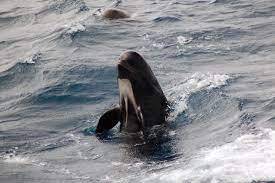
these sons of bitches had the audacity to be a god damn apex and eat stuff like fish, sharks (we'll come back to that in a minute), rays, seals, cephalopods, seabirds, sea turtles and other dolphin/whale species. they also hunt in packs because why fucking not. this got them the nickname "wolves of the sea".
with the fact that they eat sharks, this includes the god damn great white. they flip em over, and rip out their fucking liver.
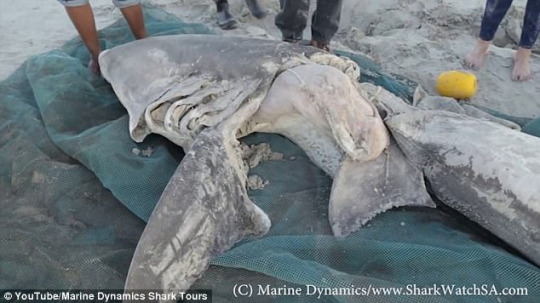
if you've noticed, i've been very harsh on these guys. i actually think they're really cool animals, and the fact that they have the black air force energy to pull this shit radiates big mood imo. they have the 2nd largest brain of any sea creature, only behind the sperm whale. i love these creatures, and would love to see them in their pods in the wild. they also really annoy me tho. i'm sorry but a shark-harassing honey badger dolphin does not deserve to be an apex. ignoring that they're an apex predator, they're at least in my top 15, maybe even top 10. that's why i gave them the honor of being my first creature of the week.
7 notes
·
View notes
Text

The Boatem crew, but as Sea Mammals
(From top to bottom we got Mumbo- North Atlantic Right Whale; Impulse- Long-finned Pilot Whale; Scar- Resident Orca; Cub- Offshore Orca; Grian- Harbor Seal; and Pearl- Australian Humpback Dolphin)
#Into the Blue Au#boatem crew#gtws fanart#mumbo jumbo fanart#grian fanart#impulsesv fanart#pearlecentmoon fanart#cubfan135 fanart#I like orcas#traditional media#crayola colored pencils
7 notes
·
View notes